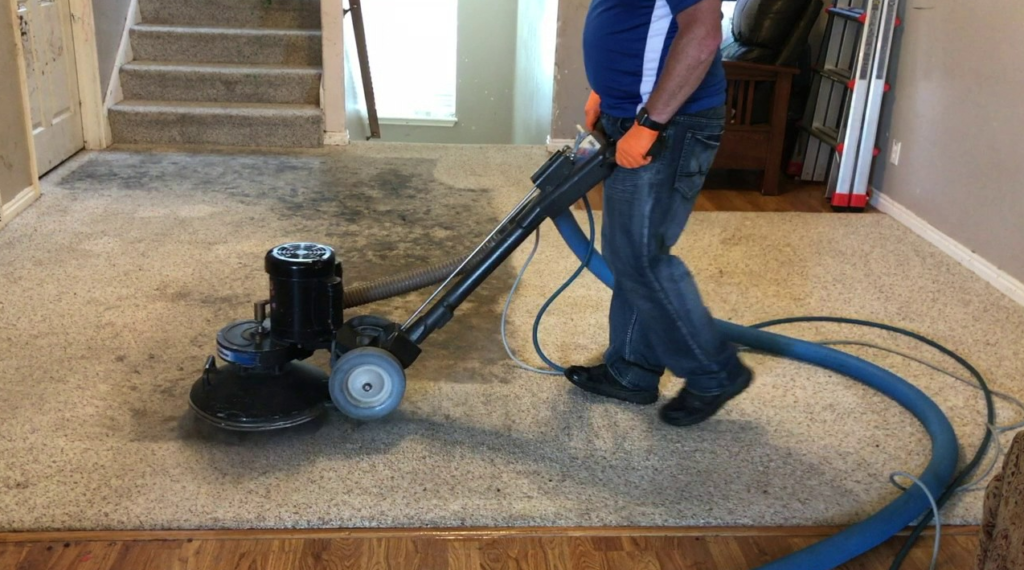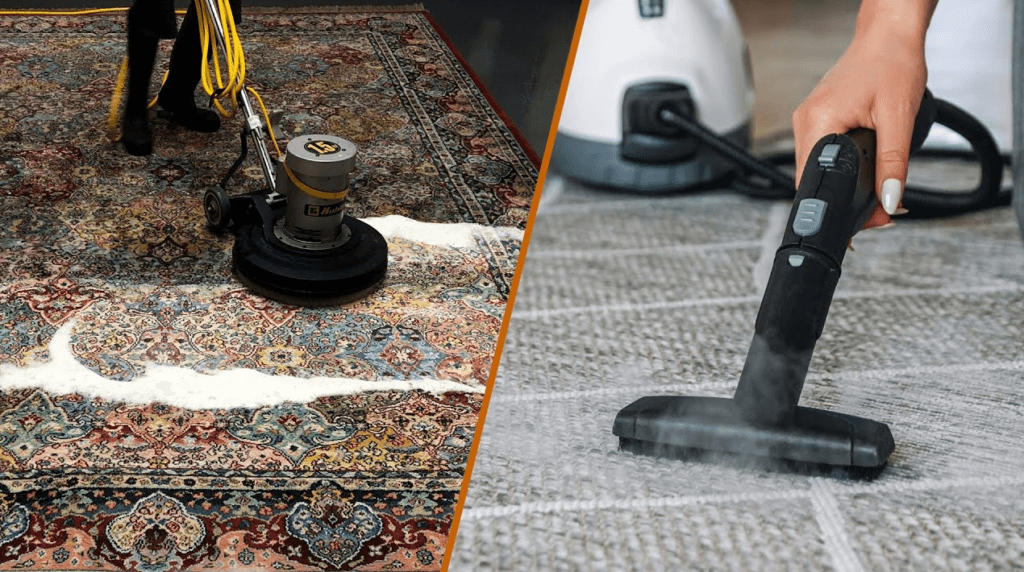Carpet cleaning is essential for maintaining a fresh and healthy home environment. With daily foot traffic, accidental spills, and the accumulation of dirt and allergens, carpets can quickly become dirty and stained if not properly maintained. Choosing the right carpet cleaning method is crucial to extend the life of your carpets, maintain their appearance, and ensure a cleaner living space. This guide explores the best carpet cleaning methods, offering an in-depth look at the most effective techniques for keeping your carpets spotless.
Why Regular Carpet Cleaning Is Important
Carpets act as filters, trapping dust, dirt, pet dander, and allergens. Over time, these contaminants accumulate, leading to a host of problems such as unpleasant odors, unsightly stains, and even health issues like respiratory problems and allergies. Regular cleaning not only helps in maintaining the appearance of your carpets but also ensures a healthier indoor environment. Additionally, routine carpet cleaning extends the life of your carpets by preventing wear and tear caused by dirt and debris.

Key benefits of regular carpet cleaning:
- Improves indoor air quality.
- Removes stains and odors.
- Extends carpet lifespan.
- Enhances the appearance of your home.
Now, let’s dive into the best carpet cleaning methods available today.
Hot Water Extraction (Steam Cleaning)
Hot Water Extraction, commonly known as steam cleaning, is one of the most popular and effective carpet cleaning methods. It involves spraying a mixture of hot water and cleaning solution onto the carpet and immediately extracting it using a powerful vacuum. This deep-cleaning process removes dirt, bacteria, and allergens from deep within the carpet fibers.
Advantages:
- Provides a deep clean, removing embedded dirt and allergens.
- Highly effective for removing tough stains.
- Eco-friendly, as it uses water-based cleaning solutions.
Disadvantages:
- Carpets can take several hours to dry (usually 12-24 hours).
- Requires professional equipment, although rental options are available.
Best for: High-traffic areas and homes with pets or allergy sufferers.
Dry Carpet Cleaning
Dry carpet cleaning is a low-moisture method that uses specialized machines to apply a dry cleaning compound to the carpet fibers. This compound acts like a sponge, absorbing dirt and grime, which is then vacuumed away. Unlike steam cleaning, dry cleaning requires no drying time, making it ideal for quick cleaning needs.
Advantages:
- No drying time is required.
- Safe for all carpet types, including delicate fabrics.
- Convenient for homes that need regular quick cleaning.
Disadvantages:
- May not provide as deep a clean as steam cleaning.
- Some cleaning powders can leave residue if not properly vacuumed.
Best for: Busy households or commercial spaces where quick turnaround is necessary.
Carpet Shampooing
Carpet shampooing was once the go-to method for carpet cleaning, and though it’s been somewhat replaced by modern techniques, it’s still effective in certain situations. This method involves applying a foam-based cleaning solution that scrubs the carpet, loosening dirt and stains. After the foam has dried, the residue and dirt are vacuumed up.
Advantages:
- Effective at removing surface dirt and stains.
- Affordable and widely available for DIY use.
Disadvantages:
- May leave behind a sticky residue if not rinsed properly.
- Carpets can take a long time to dry.
Best for: Removing stubborn stains on lightly soiled carpets.
Bonnet Cleaning
Bonnet cleaning is a surface cleaning method often used in commercial environments. It involves using a rotary machine with a cleaning pad soaked in a cleaning solution to scrub the carpet’s surface. The method is quick and effective at refreshing carpets without soaking them.
Advantages:
- Quick drying time (less than an hour).
- Ideal for commercial spaces with large areas of carpet.
- Economical and fast.
Disadvantages:
- Only cleans the surface, leaving deep-seated dirt behind.
- Can wear down carpet fibers with repeated use.
Best for: Routine maintenance in commercial buildings or large carpeted spaces.
Encapsulation Cleaning
Encapsulation is a relatively new carpet cleaning method that uses a synthetic detergent. This detergent crystallizes into a powder when dry, encapsulating the dirt. The crystallized dirt is then vacuumed away, leaving the carpet clean and residue-free.
Advantages:
- Dries quickly, usually within an hour.
- Requires minimal water, making it eco-friendly.
- Reduces the chances of mold or mildew growth due to low moisture levels.
Disadvantages:
- Not suitable for heavily soiled carpets or deep cleaning needs.
- May require more frequent cleaning to maintain cleanliness.
Best for: Regular maintenance and lightly soiled carpetshttps://carpet-rug.org/carpet-for-homes/cleaning-and-maintenance/.
DIY vs. Professional Carpet Cleaning
When deciding between DIY carpet cleaning and hiring professionals, there are several factors to consider. While DIY cleaning methods like renting a steam cleaner can save money, they often don’t match the results of professional cleaning services. Professional cleaners have access to industrial-grade equipment and eco-friendly cleaning solutions that provide a deeper, more thorough clean.
DIY Carpet Cleaning:
- Pros: Cost-effective, convenient, can be done on your own schedule.
- Cons: May not provide as deep a clean, can take longer to dry, limited equipment capabilities.
Professional Carpet Cleaning:
- Pros: High-quality, thorough cleaning, faster drying times, uses advanced equipment.
- Cons: Higher cost, requires scheduling.
Frequently Asked Questions (FAQs)
1. How often should carpets be cleaned?
Carpets should be professionally cleaned every 12 to 18 months. However, high-traffic areas, homes with pets, or households with allergy sufferers may require more frequent cleaning.
2. Can steam cleaning damage my carpet?
No, steam cleaning is safe for most carpet types. However, it’s important to ensure that the carpet dries completely after cleaning to prevent mold growth.
3. Is dry cleaning better than steam cleaning for carpets?
Dry cleaning is faster and requires no drying time, but steam cleaning provides a deeper clean. The best method depends on your carpet’s condition and your cleaning needs.
4. Can I shampoo my carpet too often?
Yes, over-shampooing your carpet can leave behind a soapy residue that attracts more dirt. It’s best to follow the manufacturer’s guidelines and opt for professional cleaning when necessary.
5. How can I remove pet odors from my carpet?
Steam cleaning is highly effective for removing pet odors, but enzymatic cleaners are also useful in breaking down odor-causing compounds.
6. What is the best way to dry carpets after cleaning?
Use fans, open windows, and run dehumidifiers to speed up the drying process. Avoid walking on the carpet until it is completely dry.
7. Are there eco-friendly carpet cleaning options?
Yes, many professional cleaning services now offer eco-friendly solutions, such as low-moisture cleaning methods and biodegradable cleaning products.
8. What is encapsulation carpet cleaning?
Encapsulation is a modern, eco-friendly cleaning method that uses a detergent that crystallizes dirt, which is then vacuumed away.
9. How do I maintain my carpet between professional cleanings?
Vacuum regularly, spot clean spills immediately, and consider using doormats to reduce dirt and debris from entering your home.
10. Can carpet cleaning remove all stains?
While most stains can be removed with professional cleaning, some deep-set stains may require specialized treatments or may not be completely removable.
Conclusion
Carpet cleaning is essential for maintaining a healthy and visually appealing home. Whether you choose hot water extraction, dry cleaning, or another method, understanding the benefits and limitations of each approach will help you make an informed decision. Regular professional cleaning, combined with proper maintenance, will keep your carpets looking fresh and extend their lifespan.
By choosing the right carpet cleaning method for your needs, you can enjoy a cleaner, healthier home while preserving the beauty of your carpets for years to come.

